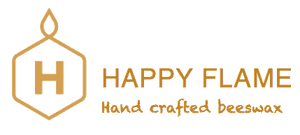We asked Dr Sarah Lantz to explain how our children are exposed to so many chemicals and how we can, as parents, reduce the load on all of the family.
Parenthood is deeply embedded in chemical consumerism. We all rely heavily on the consumption of food, nappies, wipes, clothing, toys - not just for everyday subsistence, but for participation and inclusion in social and friendship groups. Advertisers also promise a better life for one’s children through wise (chemical) consumption decisions – and we believe this. Yet, research continues to show us that we are currently birthing a generation of pre-polluted children from these everyday consumer products. Brominated flame-retardants, dioxin, perfumes, pesticides, methylmercury, parabens, triclosan, vinyl, phthalates, bisphenol A and other synthetic chemicals are regularly detected in the blood and tissue of our freshly birthed babies, young children, and in the breastmilk of nursing women. These chemicals come from our everyday personal care products, cosmetics, food and food packaging, on surfaces and in the soil, water and air, building materials, and cleaning products. We inhale them, we ingest them, we absorb them into our bodies. And these chemicals are not so much ‘hidden’ as they are assumed to be safe. For most of us, we hold a number of beliefs about the products we buy and use, including: i) I can trust the safety of the products I use; ii) My health is not affected by the products I use; iii) Labels are accurate and consistent and list all the chemical ingredients in the products I use; iv) The government accurately regulates products and, in the process, protects me from chemicals known to harm my health; v). I can trust the companies making the products I use because they put my health before dollars and cents. Research continually shows that these assumptions are simply not true.
How do parents reduce their toxic load?
We make choices everyday about the consumer products we purchase and use. Here are some of my immediate tips for reducing a toxic load and creating a low-tox home:
Become a conscious consumer
Ask questions before buying: Is this product made in line with my values? Does it contain hazardous chemicals? What is the environmental impact of this product? Or on my health? Will it accumulate in my body? Can it be excreted?
Become a chemical detective
Learning how to read labels, challenging our assumptions about consumer products, the companies that manufacture them and the government bodies that regulate them, and knowing some of the health implications of chemicals is a significant step towards living healthier in a toxic world.
-Withdraw consent from companies that produce toxic products;
-Purchase ethical, certified organic, natural products;
-Look for products that are certified organic to food standards (and have the certified organic logo). Personal care and cosmetics should be as pure as the foods we eat.
-Read labels – marketing claims are limited by the law, and can mean anything or nothing at all;
-Familiarise yourself with a good chemical data base.
Create a toxic free home
The environment we provide our children has a profound effect on every facet of their development. The right to a clean, healthy and uncontaminated environment, so that they are able to achieve their maximum potential is the foundation for wellbeing. Consider what’s in your pantry, your shed, your cleaning products, your personal care products.
Eating for wellness
Whenever you buy your food, whether that is at a supermarket, organic wholefood shop, health food shop, farmers’ market, cafe or restaurant, talk to the owners/farmers about your ethical concerns, needs and requirements. Ask them to stock the products you require and that they meet your ethical standards. Your request makes ethical products and foods more available to others and alerts them to customer needs and requirements.
Demand protective policies
There is currently no specific policy on children’s environmental health in Australia (Chemicals that are banned in other countries are still being consumed here in Australia eg. BPA – Bisphenol A, Phthalates; some flame-retardants; food colourings; preservatives etc.). Demand more rigorous laws for chemicals prior to release.
What about chemical regulation you ask?
The statement ‘the dose makes the poison’, made by physician Paracelsus in the 16th century, formed the basis of the chemical regulation, and still informs it today. We now know that this statement does not tell the whole truth. It’s not only the dose, but also the type of chemical, the timing of exposure, the combination of chemicals and individual risk factors that combine to produce toxic effects. These factors give rise to what professor Marc Cohen calls the 10 toxic truths:
-Everyone is affected
-The full extent is unknown
-Tiny doses can have big effects
-Biomagnification occurs up the food chain
-Chemical cocktails are synergistic
-Bioaccumulation occurs over the lifespan
-Windows of development are critical
-Effects are trans-generational
-Risk is unequal, unjust and greater for the young
-Exposure is unequal, unjust and accidents happen
Chemical policy assumes that our bodies can take a certain amount of toxins and contaminants before our systems begin to collapse, or the proverbial, ‘broke the camel’s back’. The thing is though, nobody really knows when that’s going to happen.
Some individuals retain and react to toxic chemicals more than others, most likely due to biochemical individuality, genetic differences, age and stage of development, and nutritional differences. Basically, individual body chemistries behave differently.
The fact is though, our bodies were never designed to process and eliminate modern synthetic chemicals, particularly at the level that they are exposed to today.
More information on the chemicals that effect our world? This blog would be a good one to read next. "Chemicals and our health- diving deep..."
For more information see books below:
References
Lantz, S. & McIntosh, One Bite at a Time, Ink Asia, Sydney, 2017.
Lantz, S. Protecting children from toxic chemicals: Putting it on Australia’s public health agenda, Journal of Public Health Policy, 2014, Volume 34, Issue 4: 502–514.


